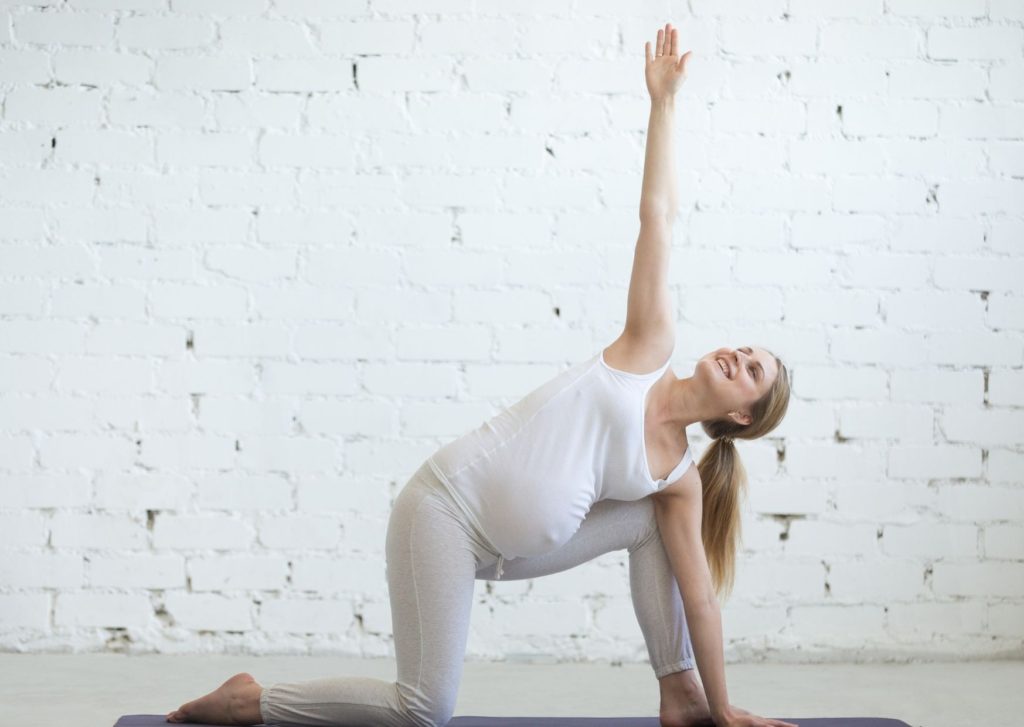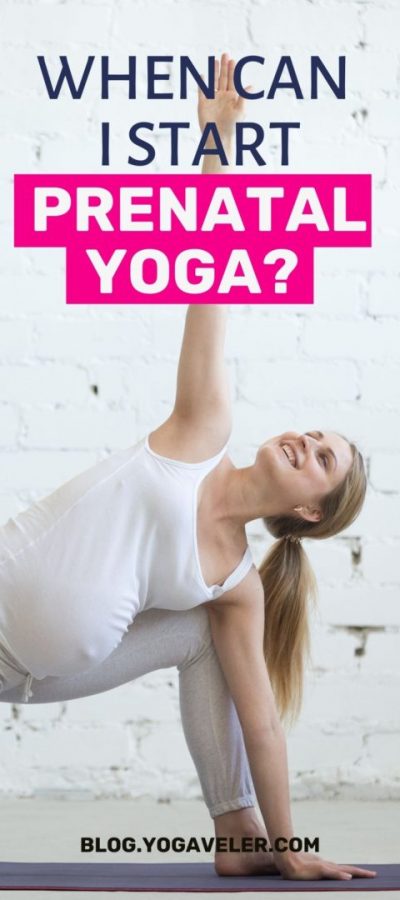When Can You Start Prenatal Yoga?
Pregnancy is a time when body awareness is much more important and necessary than at any other time in one’s life. Prenatal yoga can help in this process and help to take ownership of this evolving body.
Before any practice, it is recommended that pregnant women check with their health care professionals that they have no contraindications.
Prenatal yoga can be practiced anytime throughout pregnancy. The sooner the better to completely integrate all the poses that will help during childbirth. Options will be offered to practitioners as the months go by, In general, women keep their usual physical activities during the first 3 months of pregnancy. Hence, most of the time, women start prenatal yoga in the 4th month of pregnancy until giving birth.
In this article, you will learn more about all the benefits of prenatal yoga, how a prenatal yoga class looks like, what are the best poses to practice, and how the dad can also participate.
Let’s get started!
The benefits of prenatal yoga
Prenatal yoga has many benefits for moms and babies.
On the one hand, from a physical point of view, prenatal yoga helps to maintain an adapted physical activity.
Regular physical activity during pregnancy is very beneficial for both mother and baby, during pregnancy, childbirth, and recovery.
Future mothers become aware of their bodies, of the changes, of their inner strength.
Yoga is not only about asanas (postures), it is the same for prenatal yoga!
During a prenatal yoga class, mothers-to-be will also come to work on breathing (pranayama exercises).
Different kinds of breathing will help the mother live her pregnancy fully and develop her breathing capacities.
The classes will also propose techniques to anchor oneself in the present moment through meditation, and thus live one’s pregnancy to the fullest.
On the other hand, prenatal yoga allows mothers to have a psychological asset.
The changes in the body during this period are positive, women usually become aware of their inner strength.
Prenatal yoga classes are a time to exchange with other pregnant women and thus feel less alone in the process, and it also allows you to create the first connection with your baby, through breathing for example.
Certain recommendations are to be respected when practicing prenatal yoga:
- Always leave room for the baby (keep the feet apart -pelvis width-)
- No jumping
- No twisting
- No breath retention
- No overstretch
- Always keep a fluid breath
And above all, listen to your body and its sensations!
Pregnancy is not a period where you come to try new acrobatic postures, you don’t come to force the practice.
A yoga teacher certified in prenatal yoga will be able to guide you through this special moment in your life as a mother-to-be.

How does a prenatal yoga class work?
A prenatal yoga class begins with a warm-up based on Surya Namaskar (salutations to the sun) modified for pregnant women.
These sun salutations turn on all systems of the body.
They also allow for a fluid transition between the activity that the mothers were doing before the class and the class itself.
Typically, standing asana sequences are performed, followed by floor asana sequences.
Depending on the teachers, these can be a series of postures performed one after the other, each one being held several breaths, or “flow” sequences of postures chained together, and rhythmed by the breath.
Do not hesitate to ask questions to the teacher in order to know how the class will unfold, and to find the style that suits you best.
The class ends with work on breathing (pranayama), meditation, and a time of relaxation (savasana).
Prenatal yoga postures to practice
Although we apprehend the body as a whole, we can come to promote asanas to work on the opening of the rib cage, the hips, and to anchor oneself in the present moment.
With the advance of pregnancy, the baby takes more and more space compressing the rib cage, that’s why prenatal yoga can be an ally to work on the breathing and the opening of the rib cage in all its dimensions.

1. Triangle pose
Often we only think about the front of the rib cage.
With prenatal yoga, we will focus on stretching the sides and opening the intercostal spaces with postures such as Trikonasana (triangle posture).
With the advance of pregnancy, the baby takes more and more space compressing the rib cage, that’s why prenatal yoga can be an ally to work on the breathing and the opening of the rib cage in all its dimensions.

2. Balasana asana
To become aware of the “backward” breathing, we will come to position ourselves in balasana (child’s posture) making sure to open the knees to leave room for the belly, and we will focus on the space between the shoulder blades by inflating this space on inspiration.
The teacher or the father-to-be, can come and put his hand on this space to guide the mother-to-be.
Prenatal yoga can help free the hips, and thus help during childbirth.

3. Supta Baddha Konasana's posture
This yoga pose with a block under the shoulder blades will allow deep relaxation while letting gravity open the hips, the block under the shoulder blades works allowing for the opening of the chest.
A small cushion can also be placed under the shoulder blades instead of the block.

4. Vrksasana posture
The Vrksasana posture (tree posture) is very good to work on anchoring oneself to the present moment and practice focus and concentration.
No matter what variation you choose (foot resting on the thigh, calf, or big toe in contact with the ground), to achieve a balanced posture, the mother will have to concentrate, paying attention to her sensations, and listening to her body.
Breathing will help the mother to anchor herself in the ground. It will be necessary to let the thoughts go and not cling to them to remain concentrated on the posture.
What about dads?
Dads can of course participate or even do duo postures.
Duo yoga workshops can be a great time to prepare together for the baby’s arrival.
These are quality moments of well-being and complicity for both of them.
It is important that the father learns the breathing techniques to be able to help the mother during pregnancy and childbirth.
In the duo postures, the couple comes to support each other, physically and psychologically, while waiting for the baby.
The tree posture is a posture often performed in duo workshops, where both parents are arm in arm supporting each other.

Conclusion
Prenatal yoga can be started as soon as the mother realizes she is expecting.
However, most mothers will start after the 4 months, since they can stick to their regular practice (be it yoga or other) until the end of the 3rd month.
It’s important to note that pregnancy yoga’s goal is to help the mother and baby throughout the process.
On the mental side of things, it teaches the mother to be more self-aware, to listen to her body, and important breathing exercises to be calm during the process.
On the physical side of things, it helps opening up the rib cage and the hips to make for an easier childbirth.
If you want more info about what a prenatal yoga class may look like, check out this video!
Did you find this post useful? Save THIS PIN below to your Pinterest Yoga board on Pinterest for later!


